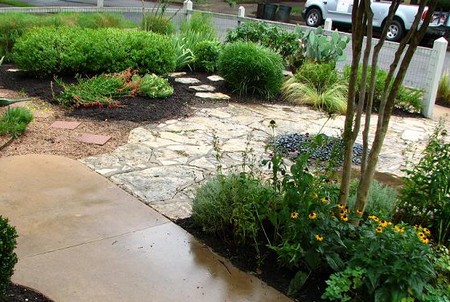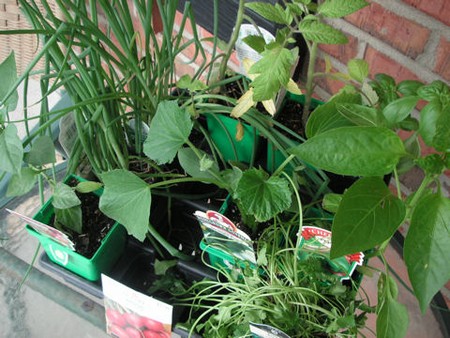Best Way to Deal with Old Plants in New Garden
Whenever moving house presents a gardener with an existing garden packed with shrubs, trees and climbers, the questions ‘are they too old and overgrown?’ and ‘should they be dug up?’ immediately spring to mind. If the plant is in the right position, but overgrown, do not remove it but rather prune it. You may have second thoughts about the plant after a while, but initially do not remove plants that can be rejuvenated.
Rejuvenating neglected shrubs
Many old, neglected shrubs are large and unsightly, swamped with foliage and covered with shoots that produce few flowers. Neglected hedges can also become excessively large, excluding light and robbing the soil of moisture and food. Here are a few ways to quickly give common shrubs a new lease of life:
- Aucuba japonica ‘Variegata’ (spotted laurel): Cut back overgrown shrubs to about 6ocm (2ft) above the ground in spring.
- Berberis: Usually, no regular pruning is needed but, where growth is congested, cut back old or exhausted shoots to ground level or healthy main shoots. Prune evergreen species as soon as their flowers fade; prune deciduous types in late winter.
- Buddleja davidii (butterfly bush): Where yearly pruning has been neglected, in spring use secateurs or a saw to cut back all of the previous season’s shoots to within 5-7.5cm (2-3in) of the older wood.
- Choisya ternata (Mexican orange blossom): Cut back excessively large and neglected bushes with secateurs in late spring. This usually means losing the subsequent summer’s flowers.
- Cornus (dogwood): Where shrubs are used to create coloured shoots – and have been neglected – use strong secateurs or a saw to cut all stems to within 5cm (2in) of the ground in early spring. Forsythia (golden bells): Where shrubs have been neglected, use secateurs or a saw to cut out old wood in spring. Hypericum catycinum (rose of Sharon): Where plants have become rampant, cut all shoots to within 7.5cm (3m) of the ground in early or mid-spring. Kerria japonica (Jew’s mallow): Where plants create a forest of neglected shoots, cut them all just above soil-level after their flowers fade.
- Laurus nobilis (bay laurel): Use sharp secateurs or a saw to cut back neglected and old shrubs in spring.
- Lavandula (lavender): Use secateurs to cut back straggly plants in spring to encourage the growth of fresh shoots.
- Potentilla (shrubby cinquefoil): Neglected plants produce long, straggly stems. Cut these back to their bases when the flowers fade.
- Rhododendron: Where plants are exceptionally large and leggy, cut them back in mid-spring – if necessary, to about 30cm (i2in) above the soil.
- Syringa (lilac): Where shrubs are old and neglected, rejuvenate them by cutting the entire plant to 60-90cm (2-3ft) above the ground in mid-spring.
- Rejuvenating neglected hedges
- Crataegus monogyna (hawthorn): Cut back all branches in late summer; fresh shoots will develop during the following spring.
- Ilex (holly): Use secateurs to cut back excessively large holly hedges in spring.
- Lavandula (lavender): Use secateurs to cut back straggly plants in spring to encourage the growth of fresh shoots.
- Ligustrum (privet): Use secateurs or a saw to cut back excessively large hedges in spring. It may take a full season for the hedge to create fresh growth.
- Prunus laurocerasus (common laurel): Use secateurs – and even a saw – to cut back excessively large hedges in spring.
- Rosmarinus officinalis (rosemary): Where plants are overgrown, use secateurs to cut back all shoots by half in mid-spring.
Moving daffodils and tulips
If you move to a new garden in spring or early summer, it is likely that you will inherit daffodils or tulips in flower. If you wish to move them to another area, dig them up after their flowers fade and bury their bulbs and lower stems in a trench dug in an out-of-the-way corner. Allow the foliage to die down, then remove the bulbs, store in boxes and replant in late summer or early autumn.
Categories
Advertisements
Recent Articles
 How to Understand Bed Sizes – A Small Guide
How to Understand Bed Sizes – A Small Guide How to Select Some Must Have Kitchen Accessories
How to Select Some Must Have Kitchen Accessories Best Way to Change a Car Tire
Best Way to Change a Car Tire Best Way to Write an Affirmation
Best Way to Write an Affirmation Best Way to Take Charge of Your Financial Life
Best Way to Take Charge of Your Financial Life Best Way to Survive a Party When You Don’t Know Anyone
Best Way to Survive a Party When You Don’t Know Anyone Best Way to Stop Self Sabotaging Yourself
Best Way to Stop Self Sabotaging Yourself Best Way to Start Journal Writing
Best Way to Start Journal Writing Best Way to Speak with a Powerful Voice
Best Way to Speak with a Powerful Voice Best Way to Simplify Your Life
Best Way to Simplify Your Life Best Way to Respond to a Put-Down
Best Way to Respond to a Put-Down Best Way to Reduce Acne Breakouts
Best Way to Reduce Acne Breakouts Best Way to Recover from Dining Disasters
Best Way to Recover from Dining Disasters Best Way to Quit Your Job Gracefully
Best Way to Quit Your Job Gracefully Best Way to Make Your Own Website
Best Way to Make Your Own Website



Leave a Reply